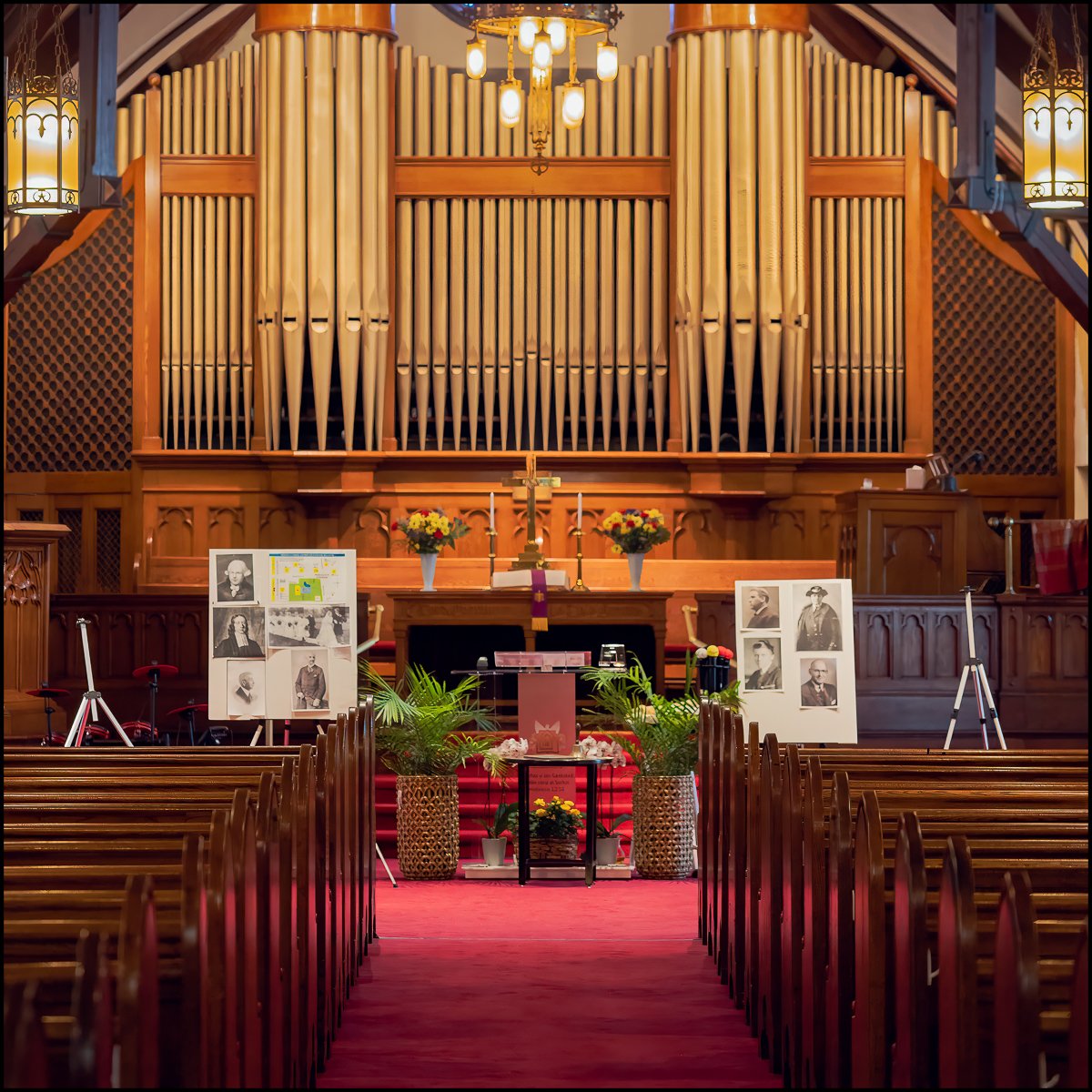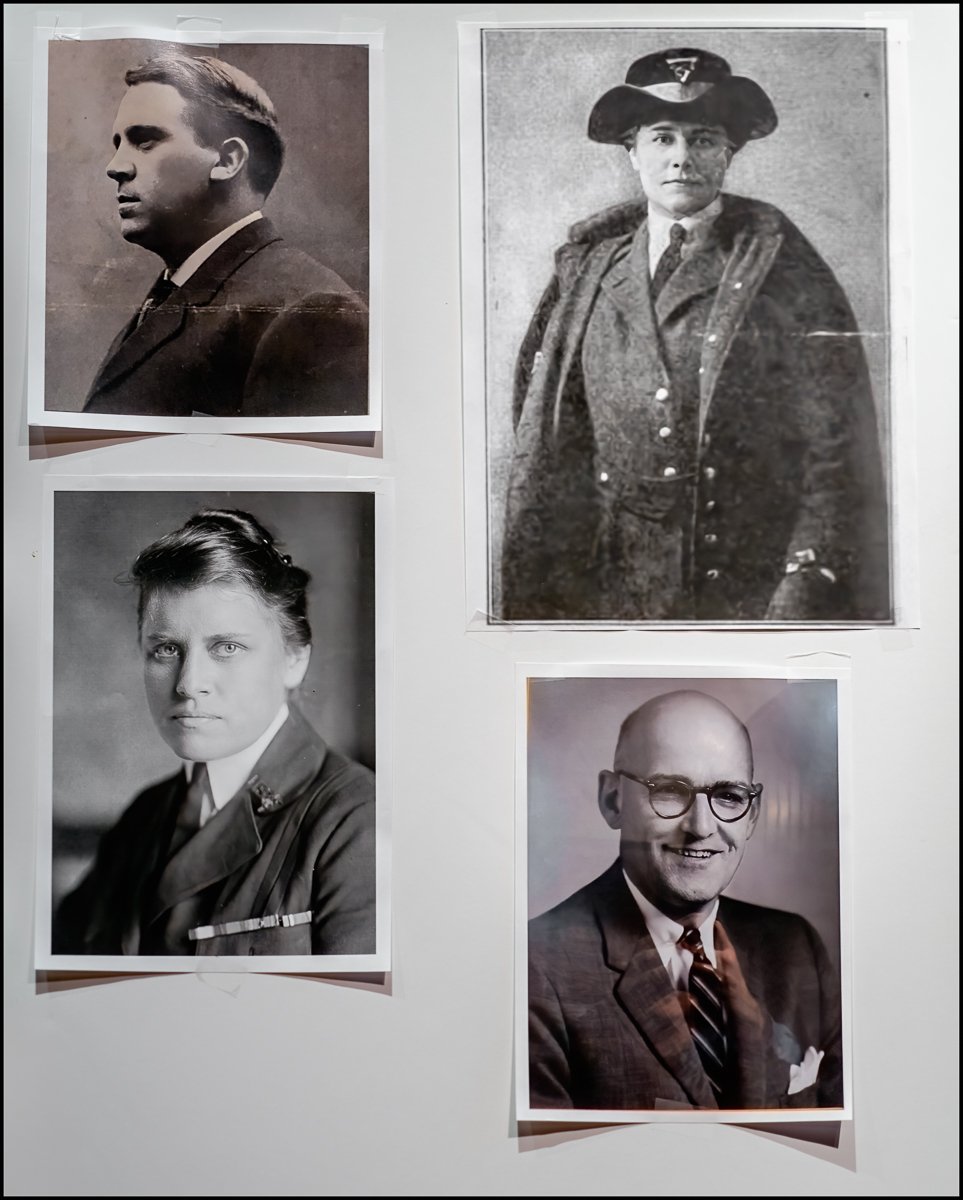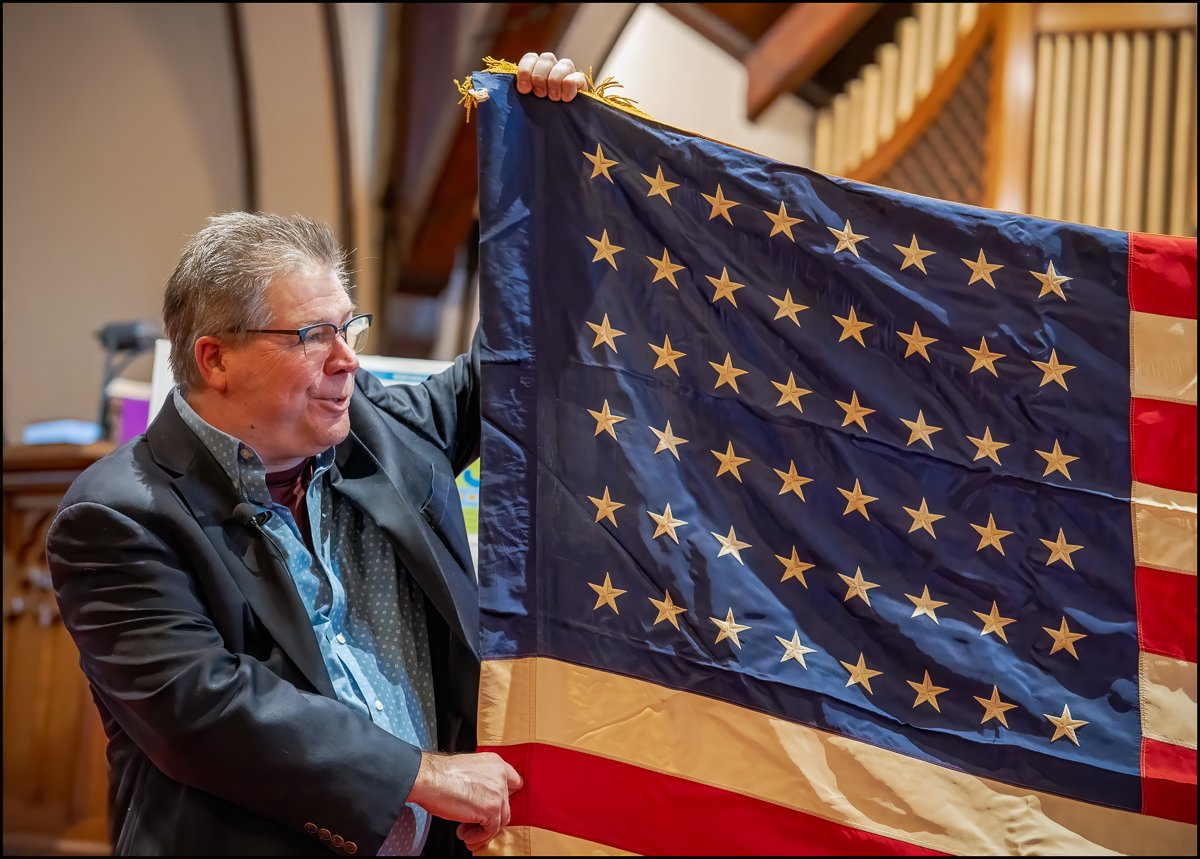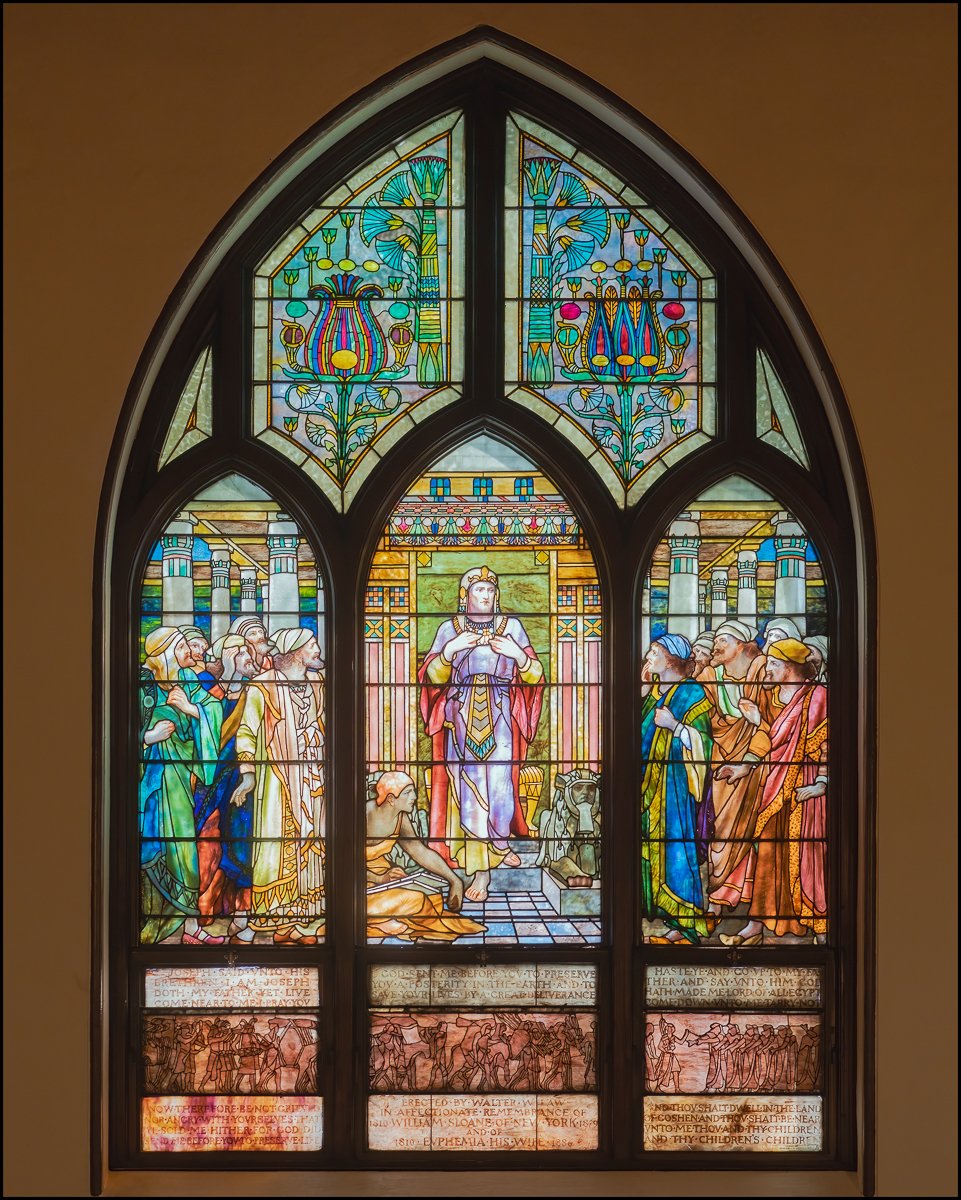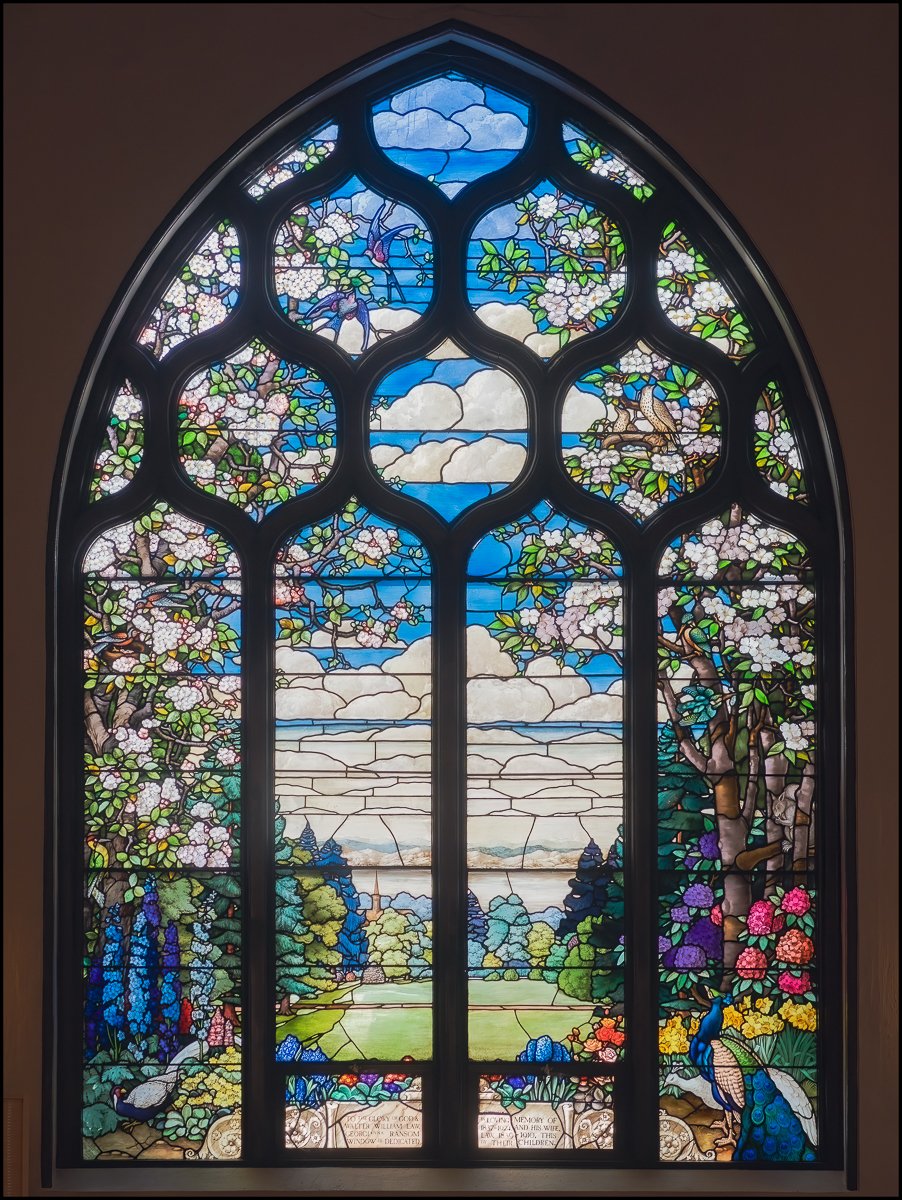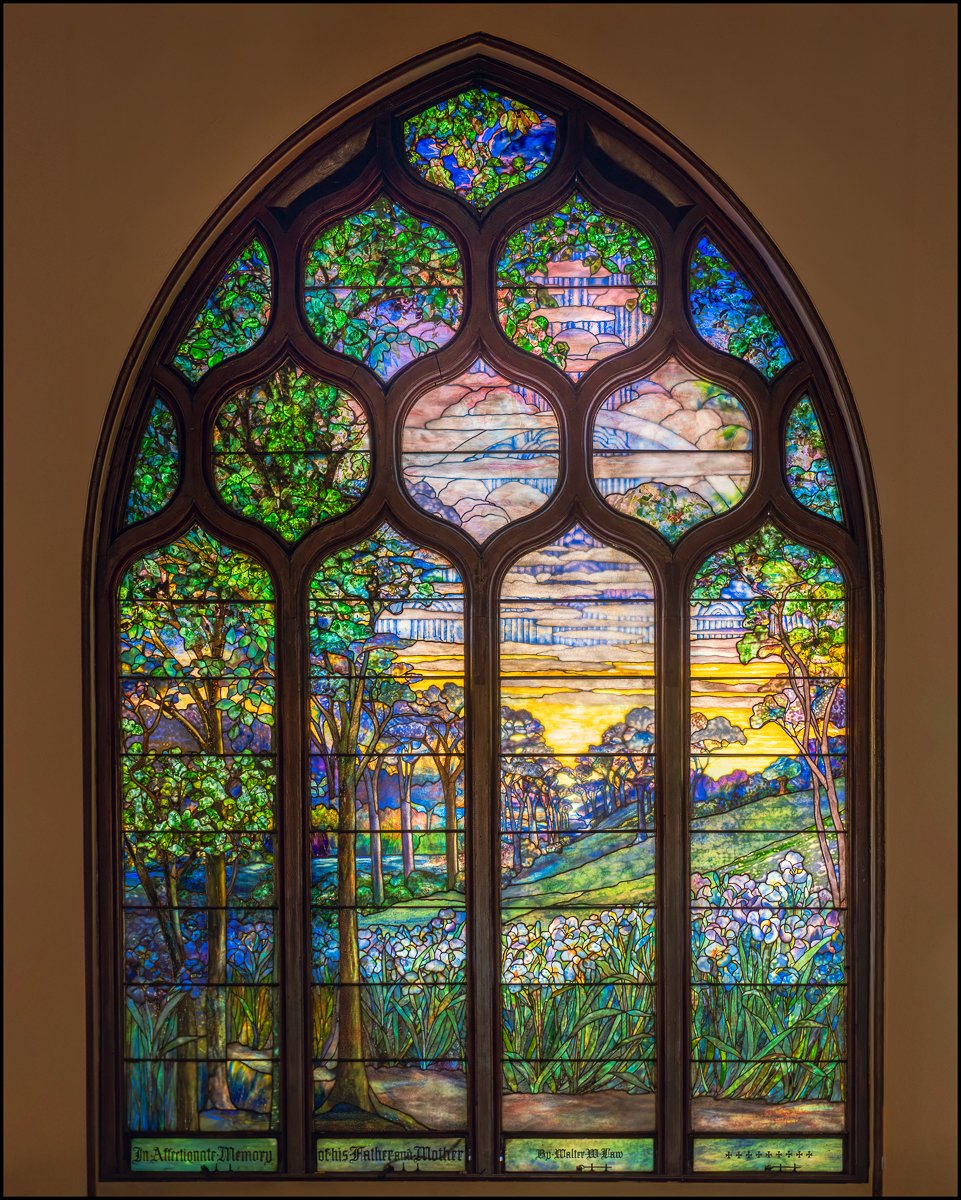Mr. Law We Need a Church
Every year the Briarcliff Manor-Scarborough Historical Society (where I volunteer) organizes a series of presentations on topics related to the history of the village. This year is the 50th Anniversary of the Society and the centennial of the death of Walter W. Law, the founder of our village. We usually hold these presentations in the Village Vescio Community Center. But this year we’ve decided to do something a bit different. We’ve decided that the focus of our Anniversary year will be on Walter Law himself, and we’re going to try to hold the presentations in some of the village’s Houses of Worship.
We decided that the first of these presentations would be at the Briarcliff Manor Congregational Church (BCC) because of the close relationship between Law and the church: Law contributed the land on which it was built and also donated a number of the spectacular stained-glass windows.
Pastor Todd Farnsworth of the BCC eagerly accepted to give the presentation, which took place February 17th, 2024, and was entitled “Mr. Law, We need a church.”
Above: The church, ready for the presentation.
Some interior shots taken while waiting for the presentation to begin:
Karen Smith, our Village Historian and Executive Director of the Briarcliff Manor-Scarborough Historical Society (BMSHS) introduces the presentation and the speaker.
Pastor Todd Farnsworth begins his presentation.
Pastor Farnsworth in full flow.
Below some of the key players in the early development of the Congregational movement, and the creation of the Briarcliff Congregational Church. Clockwise from left to right: Mr. Robert Raikes (instrumental in establishing the Sunday School movement in the UK); a map of Whitson’s Corners which later became Briarcliff Manor; Friedrich Brockelmann’s wedding to Walter Law’s daughter, Edith; Friedrich Bröckelmann; Mr. George A. Todd, Jr. who uttered the immortal words: “Mr. Law we need a church” and who provided the stone for its construction; The Rev. John Wesley.
Pastor Farnsworth spoke at some length about Friedrich Bröckelmann and included words from a particularly touching dedication delivered by his pastor, the first pastor here at BCC, Rev. Alexander Mac Coll (text in bold)
I’d like to show you a picture of Friederick Bröckelmann. You may not have heard of him before, he lived a long time ago. The picture probably gave you that clue. Friederick was a businessman who worked for a transportation company that had been called the Austrian Lloyd Steam Transportation Company in the late 1800’s. It transported customers from Trieste, Italy to Alexandria, Egypt (about 2700 miles). Mr. Bröckelmann’s work was about connecting people around the world. Mr. Bröckelmann must have been pretty good at his work based on what he is wearing. We can see a fine suit, a stylish walking cane, and one more thing…a wedding band on his left hand.
The Austrian Lloyd Steam Transportation Company experienced financial ruin in 1878 (it’s owner overspent on lavish building projects!), and a new company was founded. According to the Journal of Hong Kong Branch of the Asiatic Society*, a new company was formed in 1882 by the previous owner’s two sons. In 1882 they welcomed Carl Ludwig Reuter into the firm and in 1887 Friedrich Alexander Alfred Buesing Bröckelmann, Jr. became a partner. His business interests were in China and he helped to expand the firm that came to be known as Reuter, Bröckelmann, and Co. Friederich was an importer and exporter of almost all products and manufacturers, and also shipping and insurance agents. Mr. Bröckelmann attended the International Commercial Congress, on special invitation, as a merchant representing the business interests of Canton.
Born in the Bronx and working overseas, I’m not sure how Friederich aka Fritz came to be associated with Briarcliff, although I suspect it had something to do with the man who would become his father-in-law, Walter Law. Yes. Our Walter Law.
And through those connections, Fritz began attending our church. As someone who once attended church just to sit beside the woman I was falling in love with, I can imagine how that would happen. I can also envisage that over time, the message of the minister began to sink into Fritz’s unchurched soul.
Sadly, Fritz died of cholera in March of 1902. Fortunately for us, we can hear a glimpse of the man from a dedication delivered by his pastor, our first pastor here at BCC, Rev. Alexander Mac Coll.
As you know there has been placed in the church this week a memorial window in which the scene of which we have been speaking today is most beautifully depicted. To me, and I fancy to many of you, this window, the fifth in our church, speaks as none of the others do, not only because of the sweetness and sacredness of its theme, and the strength and delicacy of its execution, and “the light that never was on sea or land” that seems to shine through it, but for another reason. Into these other offerings of the heart we have entered sympathetically, they are memorials of the loved ones of our friends, whom we knew not; into this we enter much more intimately, it is a memorial of our friend, the first memorial of a member of this church.
I shall not soon forget that first Sunday of January two years ago (1900) in some respects the happiest day which my ministry in this place has brought me–when, standing here side by side, four men, all of them of mature age, some past middle life, made a confession of their faith in Christ and for the first time sat down with us at the Communion table. To one of them the familiar forms of faith had not always appealed, religious commonplaces did not come readily to his tongue, but there was in his heart a hunger which God had used this little church to deepen, and a faith which grew stronger and richer. And so, without suggestion from anyone, he came to me; in his own way made what I shall always think one of the most beautiful testimonies I have heard to “the simplicity that is in Christ,” and expressed a desire to sit with us at
Communion feast. For him, too, and his, it was a happy day. He was not a man to speak much of such things, but before he left for the distant home from which he was not to return, I came to know that that day lingered and would linger in his memory, that in some degree the Emmaus experience had become his, and the Master who had sometimes seemed distant was known of him as never before in breaking of bread.Besides this beautiful window which was given in his memory, Fritz’s family gave this bronze plaque commemorating the Last Supper, in memory of Fritz’s mom. You will also notice the Japanese lanterns around our property and in Law Park. These were arranged for by Frederick Bröckelman.
Stained Glass Window commemorating Fritz Bröckelmann
Notable Figures in the later history of the church. Clockwise from left to right Dr. Ion Jackson whose music ministry burned brightly from 1914-1926; Ruth Stanley Farnam (aka the Baroness de Luz) who raised funds to support relief efforts during and after WWI; Rev. Richard Beebe after whom the current Parish Hall is named; Julia Stimson, a distinguished military nurse.
Pastor Todd Farnsworth displays a US flag donated by the Baroness de Luz. A second flag donated by George A. Todd was also presented, but I wasn’t fast enough to get a decent picture of it.
Some of the 40 or so participants.
MORE ON THE STAINED GLASS WINDOWS
The website of the church has a section on their magnificent Windows:
“The Briarcliff Congregational Church (BCC) is endowed with many wonderful gifts both spiritual and material. One of the church’s priceless treasures is its collection of stained-glass windows, spanning more than 100 years of stained-glass art. All the windows were donated as memorial gifts, a tradition started by the church’s benefactor, Walter W. Law. Most represent specific biblical stories; some show historic persons; one or two allow the viewer’s imagination to have a go; others’ symbolism have multiple interpretations. All are beautiful to see; all change as the light moves with the day. The windows at The Briarcliff Congregational Church are also a reflection of the history, life, and traditions of the church as well as that of the community.
There are 17 stained glass windows in all, representing several well-known studios and decorative arts companies: J&R Lamb, NY; William C. Willett, Philadelphia; John Hardman Studios, Birmingham and London; Woodhaven Studios, Bermuda. Perhaps the most well-known among these is Tiffany Studios. BCC has 7 magnificent Tiffany windows, installed between 1898 and 1906.
“Windows of the Soul” briefly explores 10 of these magnificent windows: their art, history, biblical reference, and meaning.”
More Stained-Glass Windows (click on a thumbnail for a larger version), mostly on each side of the Nave. I fear I may have missed some of them.
Details of some of the larger windows. (click on a thumbnail for a larger version).
The Briarcliff Congregational Church has published a wonderful book entitled: Glory in Glass. A Celebration of The Briarcliff Congregational Church 1896-1996 Hardcover – January 1, 1996. I think it might be out of print, but it’s possible that a few copies might be available from the Church. I know from talking to the original creators of the book that a new version is “in the works”.
Rev. Todd Farnsworth gave a wonderful presentation. It was informative, humorous, and at time touching. The participants really seemed to enjoy it. I think we can consider our attempt to hold a presentation in a different venue to be a success.
A video of the presentation is available (courtesy of the Briarcliff Congregational Church) via a link on the Briarcliff Manor-Scarborough Historical Society site here.
Pastor Farnsworth has also allowed us to make available the full text of his presentation notes. You can find it here.
